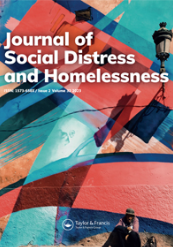This observational longitudinal cohort study examines housing status, the prevalence of a comprehensive set of individual modifiable risk factors for homelessness, and changes in the prevalence of housing status and these risk factors among initially homeless people from Amsterdam over a period of 5.5 years.
The four constitutional conditions of the Social Quality Approach (namely living conditions, interpersonal embeddedness, societal embeddedness and self-regulation), were used to cluster the risk factors included in this study. Data were collected with a quantitative questionnaire that was orally administered at two time points; at baseline (at shelter entry), and at follow-up (5.5 years after shelter entry).
At baseline (n = 172), as expected, the participants were seriously disadvantaged regarding all four constitutional conditions of social quality. At the 5.5 year follow-up (n = 72), 69% of the participants were stably housed, and, although for all four constitutional conditions of social quality significant improvements were found, the prevalence of the majority of risk factors had not decreased after 5.5 years.
Findings indicate that, even 5.5 years after shelter entry, Dutch initially homeless people still experienced high levels of social exclusion, which leaves them particularly vulnerable for recurrent homelessness. Implications for policy and practice are discussed.


